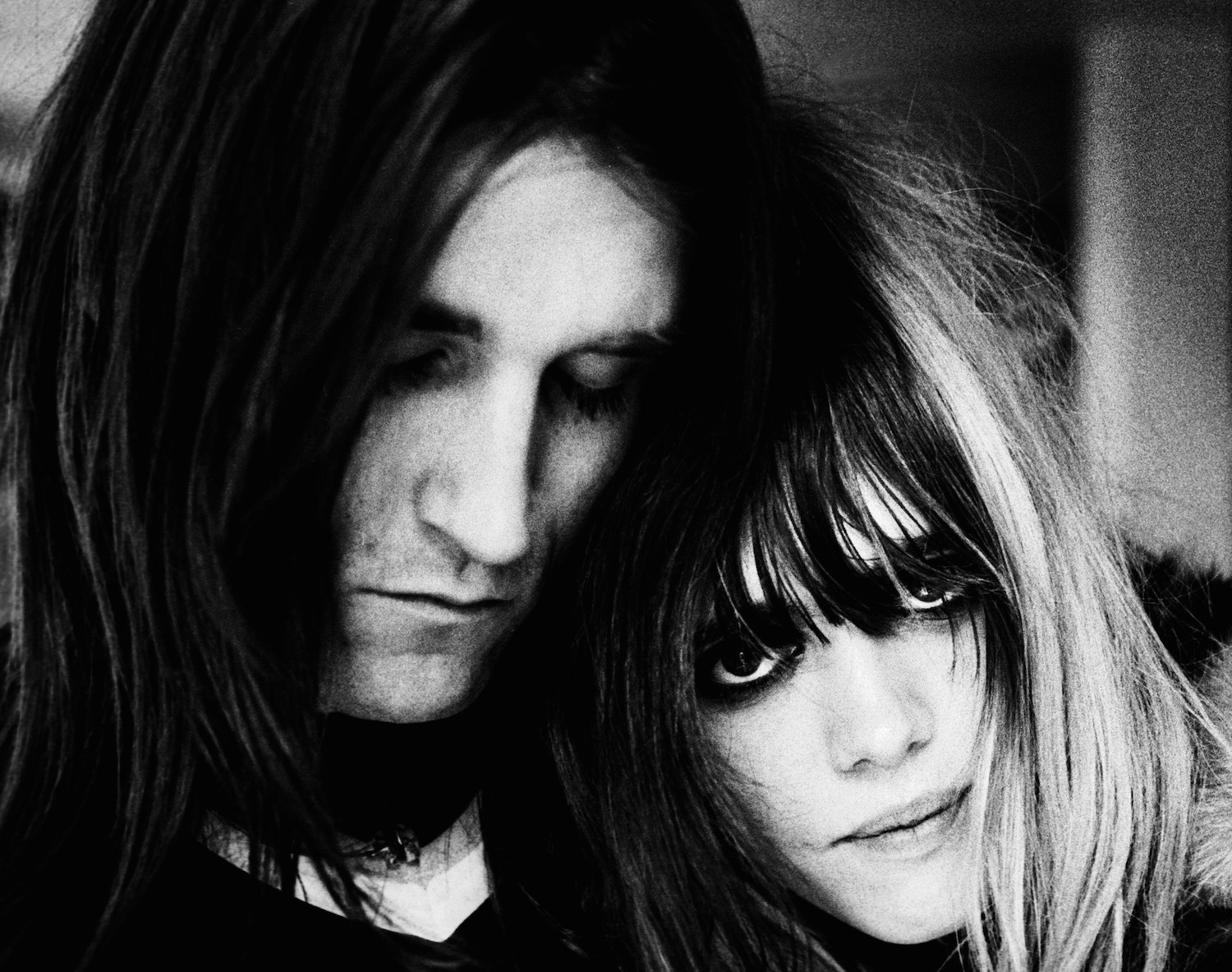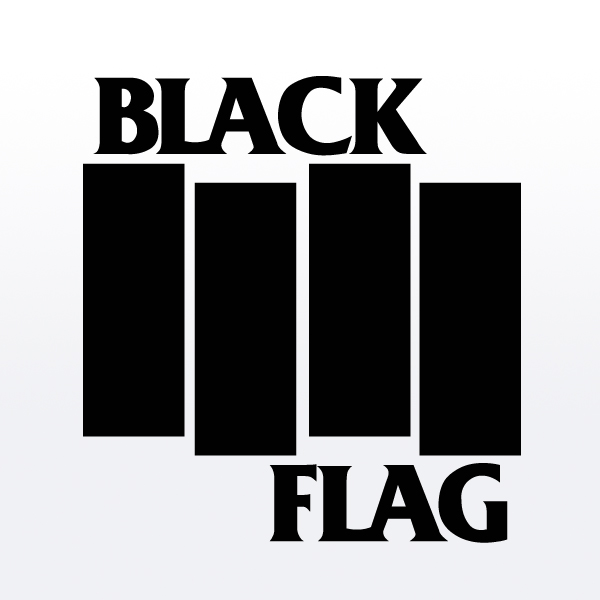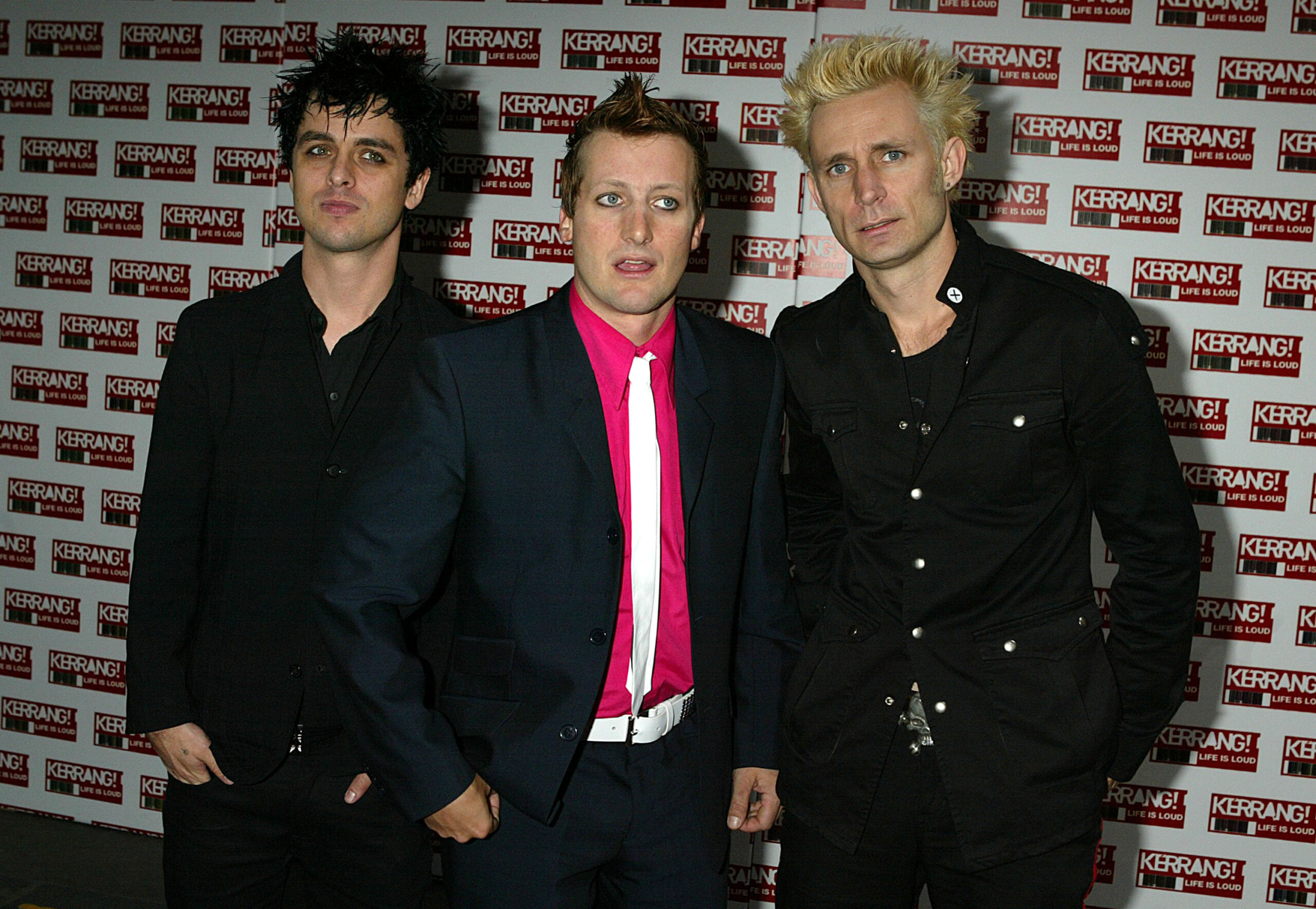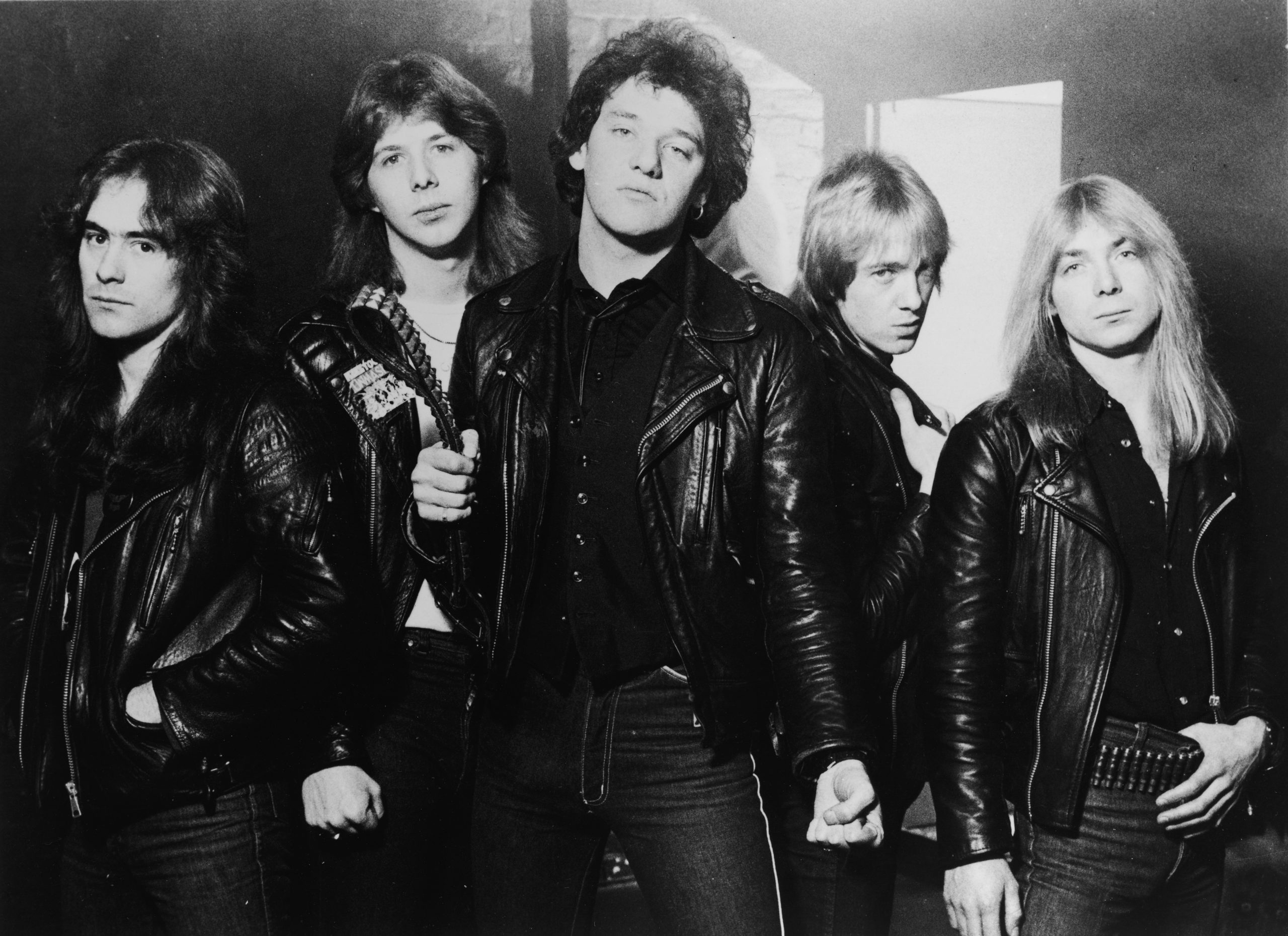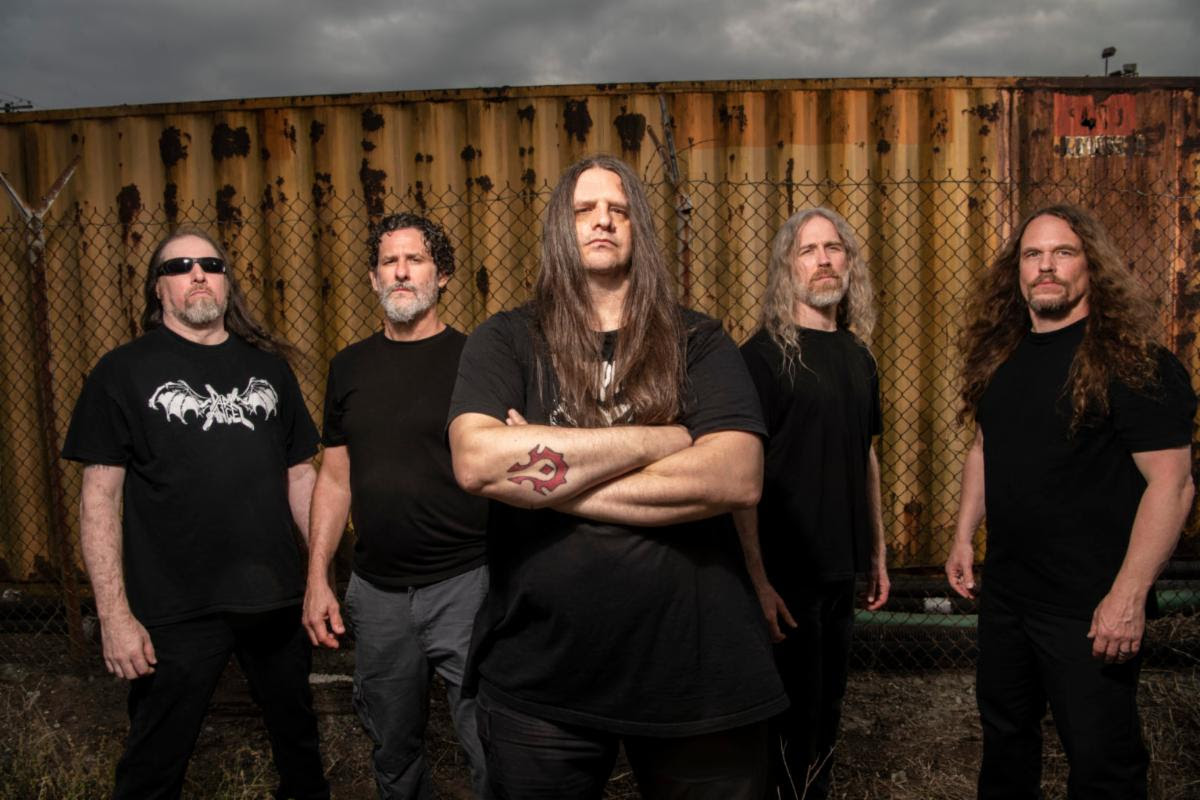Royal Trux just might be the most misunderstood band in indie rock. But their influence can be seen in contemporary bands like Liars, the Kills, Sleigh Bells, MGMT, Primal Scream, of Montreal, and others. On the surface, they've never been the easiest to digest upon first listen, from Jennifer Herrema's gravely grunts and growls, to Neil Hagerty's decidedly un-indie guitar workouts and snarling backing vocals. In a world where experimenting and taking chances with music often takes a backseat to image and playing it safe, Royal Trux flipped the script and did the opposite; because they could, and because, for them, it was always, and only, about keeping themselves interested and happy with the music. Their goal from the outset was to deconstruct rock 'n' roll and put it back together as they saw fit, with their own artistic vision. It wasn't always pretty, but good art often isn't. What is true is that their music has stood the test of time and sounds just as, if not more, relevant today than it did when conceived.
Hagerty and Herrema met in Washington, D.C. when Hagerty was in his early 20s and Herrema her late teens. They soon coupled-up and began Royal Trux, seemingly around the same time, circa 1987. For the first few years, the band would serve as more of a side project of sorts to Hagerty's main gig as a member of the Jon Spencer- and Julia Cafritz-led Pussy Galore (whom Buzz Osbourne of the Melvins once accurately described as "industrial rockabilly"). All parties relocated to New York City in the mid-to-late '80s, and in 1988, Royal Trux released their self-titled debut. Not long after, their Pussy Galore connections got the attention of Chicagoans Dan Koretzky and Dan Osborn, who were starting a record label (to be called Drag City) and asked the band for music. The band handed in the first Drag City release, the "Hero/Zero" 7", and shortly thereafter, the seminal double-LP Twin Infinitives. Thus sprang Royal Trux.
Hagerty and Herrema have always exuded and oozed coolness and individuality. Herrema was usually decked out in skin-tight jeans, boots, tons of jewelry -- often with duct tape wrapped around her wrists and/or legs, hiding behind her long blonde hair and aviator shades. Hagerty, certainly the yin to Herrema's yang, was shy, quiet, socially awkward, and usually let his playing doing the talking.
Unfortunately, for the entirety of their career, the stereotype of the "junkie couple" followed them. At times they didn't do much to evade it, having famously squandered a rather large recording advance early in their career from Matador Records on illicit substances and then deciding not to record for the label. Herrema becoming the first model for Calvin Klein's "Heroin Chic" campaign in the mid-'90s may not have helped this stereotype either. The downside, of course, is that it took attention away from the music and likely lost them fans. Case in point, while playing the side stage at the 1993 Lollapalooza, Herrema even had to endure "Axl Rose!" heckles from the crowd. Whether it was their reputation, appearance, music, or all of the above, Royal Trux spent the bulk of their career being misunderstood.
Aside from her post-Trux musical projects (detailed below), Herrema has gone on to create a line of jeans for Volcom, designed jewelry and art, and has given talks on Southern rock at places like Princeton University, among other artistic ventures, while Hagerty has painted, as well as written two books, one of which was a science fiction novel (Victory Chimp) about a chimp investigator who exists in the "multiverse," using wrestling as a metaphor to tell the story. Their intelligence and abilities, while often hidden behind socially awkward, introverted personalities, were certainly not lost on those they worked with (as bandmates or in the role as producers). In a retrospective article about the reissue of Veterans Of Disorder by Ian Svenonius, David Pajo (of Slint, Tortoise, and Stereolab fame, among others) discussed a conversation with guitarist David Grubbs, regarding Hagerty and Herrema’s production work on an early Palace Brothers single ("Come In/Trudy Dies"), in which they both realized the level of genius they were dealing with. And, after all, junkies don't usually shrewdly write a dream major label contract, shop it around, and walk away winners, laughing all the way to the bank. There was a lot going on underneath their outward appearance, they just didn't care if you found out, and it was all on the albums as evidence for anyone to hear anyway. Hagerty and Herrema stated many times that they couldn't care less if they lost an audience and gained a new one after each album.
In fact, it could be argued that this complete disregard for what audiences thought of them freed them up to focus only on the music. And that they did! One reason why all of their records have a much different feel than their predecessors was because they conceived of each album as a distinct project and gave the process certain guidelines, rules, and parameters. Furthermore, the band approached touring differently than most. Especially in the early days, it wasn't unusual to hire players whom they hadn’t even met, based simply on word of mouth.
Often, the lineup they took on tour was not the same as the one that recorded the album, and the songs might sound quite different live. For example, the traditional rock band setup that recorded Sweet Sixteen was replaced with a keyboardist and minimal drum kit for the tour. At the conclusion of that tour, that lineup/set up recorded Accelerator, but the touring band for that album included David Pajo on bass and future Mars Volta drum wunderkind Jon Theodore (who would then work on Veterans Of Disorder, but not its tour). Live, song arrangements were often changed, sped up, slowed down, sometimes night after night. This approach was likely not lost on Will Oldham, who, first as Palace Brothers/Music/Songs/etc. and now as Bonnie "Prince" Billy, has made this a regular practice throughout his career. (Fans of Oldham might also notice that he dedicated the first Palace Songs singles collection, Lost Blues And Other Songs, to Royal Trux).
But it wasn't just their own music that they focused on; Hagerty and Herrema were solid and respected producers. After having put their golden touch on the aforementioned Palace single, Hagerty and Herrema (or Adam and Eve, as they were known when producing), produced records by the Make-Up, Edith Frost, and others. On his own, Hagerty has produced albums by the likes of Daniel Blumberg (of Yuck) and Bill Callahan. Hagerty and Herrema also frequently championed new artists. For example, they were involved in convincing Drag City to sign Will Oldham (as Palace Brothers) and took Bill Callahan (as Smog) on his first tour, co-headlining with them, in 1992.
Like most couples who have written and recorded together, when the relationship ends, so does the band, and Royal Trux is no exception. Having gone their separate ways in 2001, both have been incredibly prolific. Hagerty released a few solo albums before working under the Howling Hex name and releasing several albums since, along with this year's collaboration (Qalgebra) with Wooden Wand's James Jackson Toth, as the Hagerty-Toth band. Herrema released several albums with her post-Trux band mates as RTX, before changing the name to Black Bananas. The most recent Black Bananas release, Electric Brick Wall features two tracks that Herrema and Hagerty co-wrote, which perhaps is one of the reasons for their one scheduled reunion show (however shocking) at the Berserktown II festival in Los Angeles this August. What fans can expect is anyone's guess, especially after years of Hagerty vowing repeatedly not to work with Herrema, whose somewhat unexpected reaction and relapses as a response to her father's death led to the dissolution of the band on the Pound For Pound tour back in 2000. But the collaboration does signal good vibes, which will hopefully transmit during their show and lead to more in the future.
In at late '90s interview, Hagerty said, "You have to really like music to like our band." While that's true, if you look past the image and approach Royal Trux with an open mind, it's quite possible to enjoy their records regardless of one's musical experience as a listener or player. With a catalogue that spans 10 full-length albums, one compilation, and two EPs, with as many stylistic changes and approaches, there's a lot to sink one's musical teeth into. But it's well worth the trip.

Some bands' first albums set a precedent and foundation for the rest of their career, while for others, the first album is a snapshot of the formative stages where the band is finding their voice and niche. Royal Trux's self-titled debut from 1988 is certainly of the latter camp. The word "ramshackle" pretty accurately describes their first full-length release, though it shows promise. The songs are rough around the edges, for sure. More often than not, songs teeter on the edge of falling apart, sometimes even doing so. For whatever reason, the drums usually don't sync up with the guitars. On the whole, it resembles the more-practice-tape-than-album that was that Pussy Galore's stab at covering the whole of the Rolling Stones' Exile On Main St. than the solid and rehearsed sound of, say, Dial 'M' For Motherf***er. Herrema was still learning her voice and role, too. It should be remembered that Hagerty and Herrema were just kids when they started. Seen in this perspective, it's more appropriate to view their debut as a band learning their instruments and how to best express themselves. They would find their voice and sound soon, but they'd go through some dark and crazy experimental times before getting there.
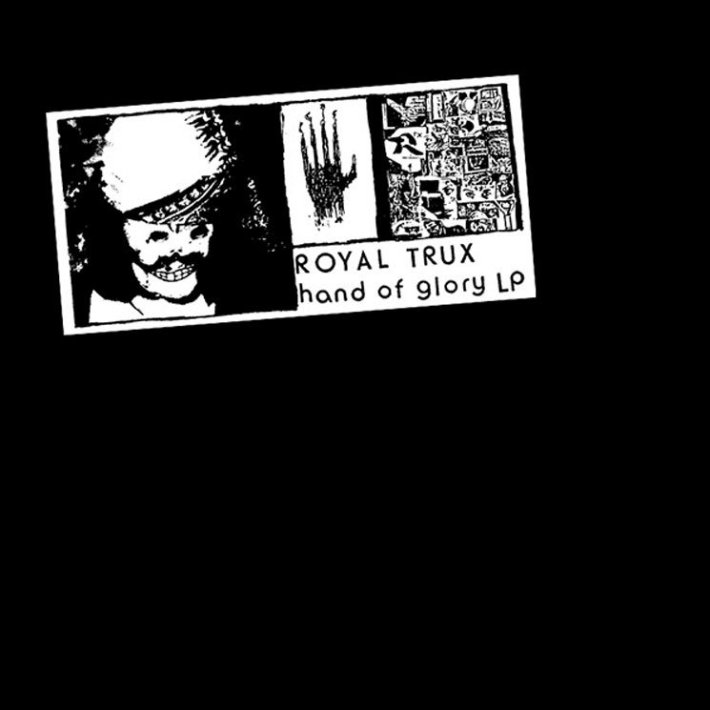
As with so many bands after their demise, closets are cleaned and vaults are emptied and voila, unreleased material is found and set for release. Such is the case with 2002's posthumous Hand Of Glory, which was originally set to be the precursor to Twin Infinitives before it was shelved. Culled from various tapes between 1985 and 1989, Hand sits well alongside the band's Twin Infinitives material and is split into two parts, one per side. Part one, "Domo Des Burros (Two Sticks)," was recorded in San Francisco around the same time as Twin and could easily be an outtake from those sessions. Part two, "The Boxing Story," a five-part suite, was recorded early on, between 1985 and 1989, and fits seamlessly alongside the first part. While certainly cleaned up and an interesting addition to the band's Twin-era experimental, sound collage pieces, it's truly for diehard fans of this period and brings nothing really new to the table, however posthumously interesting it might be.
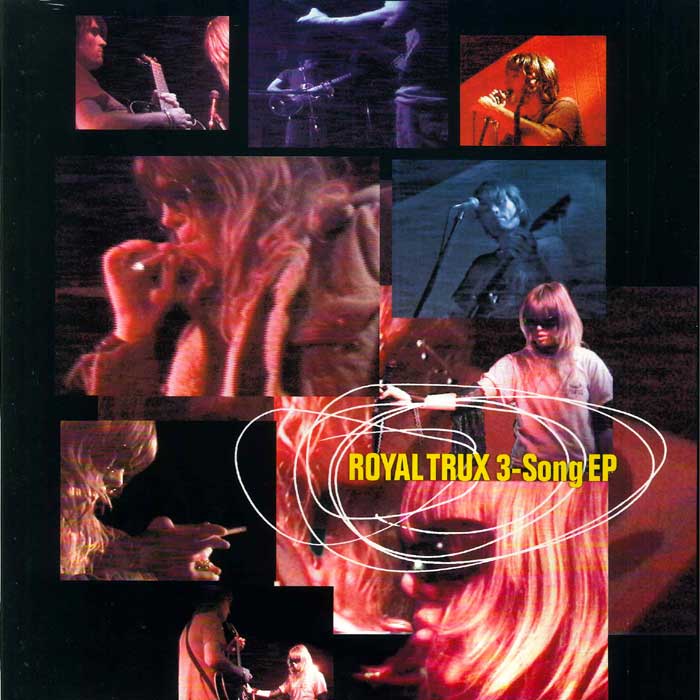
In typical Royal Trux-fashion, the 3-Song EP was recorded with the lineup that (minus Mr. Rian Murphy, who is on tambourine and backing vocals here) would tour behind, but not record on, Accelerator. The 3-Song EP provides a glimpse into what Accelerator (which was released about a week prior) would have sounded like were the band not to have discovered the infamous Spectrum Analyzer that gave that album its inimitable sound. Here, the rhythm section of future Mars Volta drummer Jon Theodore and indie vet Dave Pajo lay down a solid foundation for Herrema and Hagerty to work over. The results are mostly positive, such as on the short and edited "Run, Shaker Life": a traditional song made famous by Richie Havens, which the band would use to open many of their shows during the next couple of years, often sprawling out to the 10-minute mark.
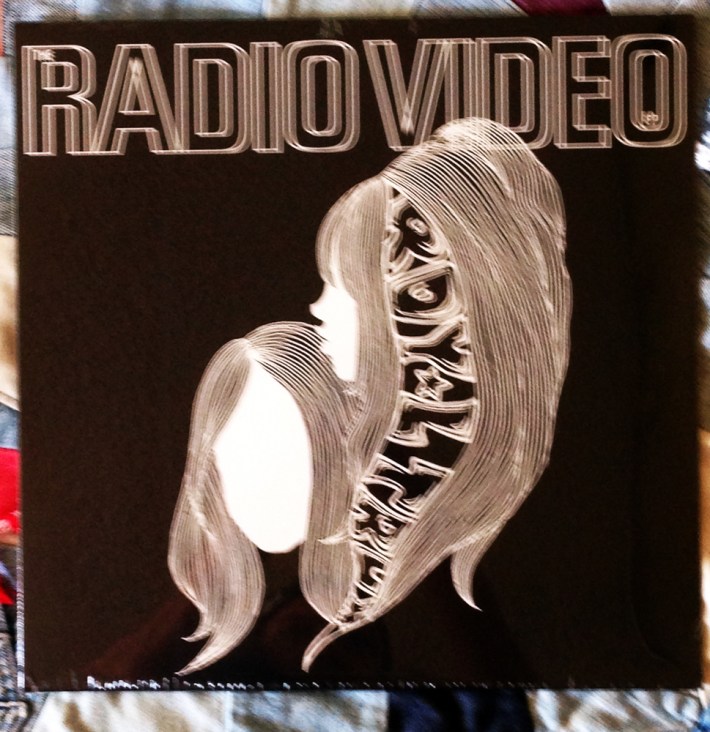
Even by Royal Trux standards, this hit like a bit of a curveball, but a pretty enjoyable one. Dub drum-n-bass with an R&B singer? Check. A song entirely dedicated to basketball ("The Inside Game")? Check. The Veterans touring band jamming out with flute and bongos and acoustic guitar live at a, wait for it ... Border's book store in Chicago?! Check! Fans of the John Cusack film High Fidelity (curated by Drag City personnel, interestingly enough) may remember the basketball rap/scat of "The Inside Game." In another universe, this jam is what the Knicks would warm up to. "Dirty Headlines" and "On My Mind" follow a similar musical pattern of drum machine and dub bass lines with Hagerty and Herrema spitting out vague one-liner throw-downs. In "Dirty Headlines" Herrema repeatedly chants, "Black and white and read all over/ Think you better run for cover," with Hagerty adding some rather crass and vitriolic rhymes that shall go unmentioned. Whom it's directed toward, only they know. With "On My Mind," Hagerty ups the weirdness by repeating lines like "We're a bunch of longhairs, what about it?" and "Richard Petty is still the king, that's been on my mind."

Upon their triumphant return to Drag City, the band emptied the vaults of pretty much anything and everything that wasn't already on a proper album. Though overwhelming in its sprawling 32 tracks (which oddly omits the Hey Drag City compilation track "Delta 70 Of Hearts" for whatever reason), Singles is a great overview of what made Royal Trux so interesting and multifaceted, as well as a strong introduction and overview of their early years. For those willing and brave enough to dive into a deep end that contains Twin Infinitives outtakes, it rewards with some serious knockouts, as well as early singles that are a bit more digestible than their debut LP. End-of-summer anthem (and show-closer during some of their later tours) "Back To School" is definitely a highlight and was even recently covered by of Montreal. The golden nugget of the whole collection might be "Shockwave Rider." Backed by Casio-powered drumbeat and melodica (!), backward synth and horn effects fade in and out in between Hagerty's verses recalling a trippy tale of a drug deal gone awry, with Herrema chiming in during the verses, saying something about a telephone. It captures nearly every trick Beck pulled on Mellow Gold, condenses it into one song, and betters it. But there's also crisp BBC sessions of straight-ahead early numbers, such as "Esso Dame" and "Sometimes," which equal or surpass their album versions. Finally, Singles seemed to be a medium that Hagerty and Herrema could safely take chances they wouldn't otherwise take with their long players, including straight-up (and seemingly out of left field) covers of Nelson Nascimiento's "FacoAmolada," Jefferson Airplane's "Law Man," and Godz track "Womban." But perhaps the most surprising is "Suicide Is Painless," otherwise known as the theme song from the show M*A*S*H. Regardless, due to its depth and breadth, Singles is probably best invested in (and likely much more appreciated) once one gets their footing with at least the pre-major label Trux albums.
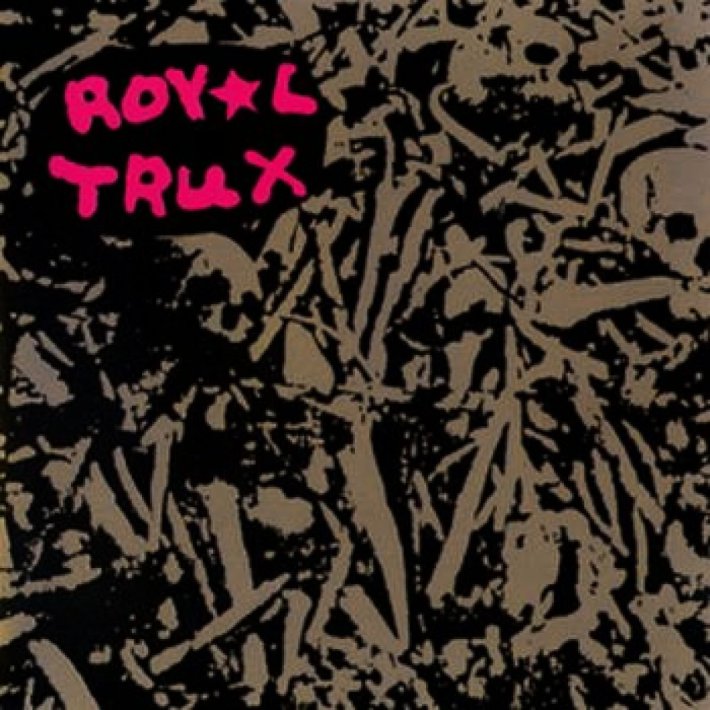
Out of the experimental haze that was Twin Infinitives, Hagerty and Herrema would emerge and reinvent themselves as a lo-fi-ish (times were tight pre-major label dough) indie rock band, which would include their early masterpiece, 1993's Cats And Dogs. The 1992 Untitled record (sometimes referred to as "Skulls") was certainly an album of firsts for the band. It was their first foray into conventional songwriting and arrangements. It was also the first real glimpses into Hagerty and Herrema's musical chemistry, and Hagerty's guitar chops. This is also where the Rolling Stones, and to a lesser degree, Velvet Underground, comparisons begin. Finally, it was their first "clean" record, though a good half of the tracks here ("Lightning Boxer," "Blood Flowers," "Hallucination," and "Junkie Nurse") either reference their former lives or were written and performed back in the early '90s. While tracks like the aforementioned "Hallucination" and "Lightening Boxer" certainly sound more akin to their earlier material, more conventional song structures were rearing their head, as well. Album opener "Air" feels like, well, a fresh breath of air and has an almost late-'60s, sunny West Coast feel, whereas "Junkie Nurse" shows off Hagerty's acoustic fingerpicking skills. Then there's "Sometimes," which is probably the poppiest thing they did until Veterans Of Disorder, and it's almost danceable! "Blood Flowers," on the other hand, is the first real Stones-like song they would record, sounding like a drug-hazed attempt at a Sticky Fingers outtake, while the garage stomping drums and repetitive and feedback-heavy guitar, along with Hagerty and Herrema taking turns speak-singing verses and shouting out the chorus together on "Sun On The Run," reveal a likely obsession with White Light/White Heat-era Velvet Underground. By 1992, Hagerty and Herrema were coming out of the haze, but weren't quite in the clear yet. It would be another year before they would produce their first (and probably best) great record, Cats And Dogs.
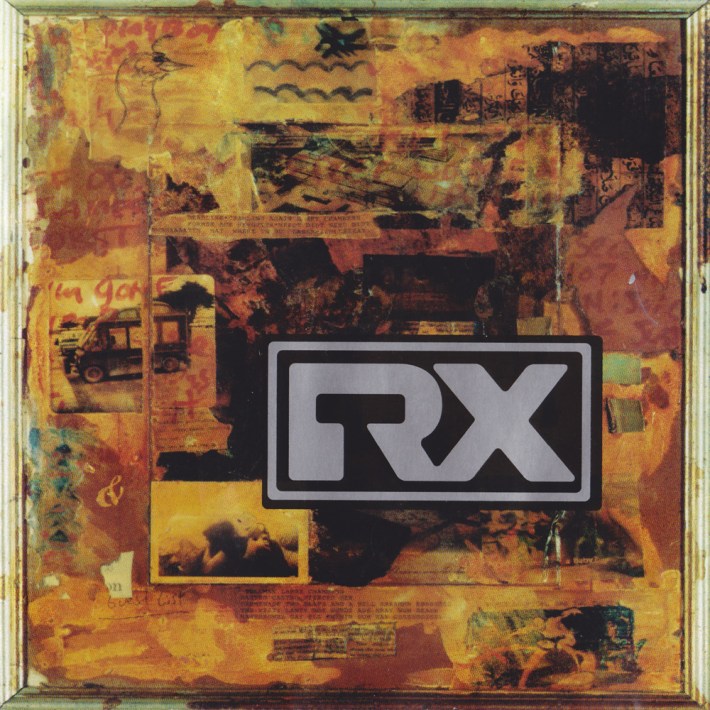
Thanks to Kurt Cobain's apparent endorsement, as well as the major-label feeding frenzy that followed, the big money came a-knockin' for their next kill and saw dollar signs with Royal Trux. With Virgin money in pocket, Hagerty and Herrema pulled out all the stops and became the Beverly Hillbillies of indie rock. Along the way, a loose concept of doing a trilogy of records that captured the spirits of the '60s, '70s, and '80s was hatched. For part one, they brought on former '68 Comeback bassist Dan Brown, along with drummer Chris Pyle (son of Lynyrd Skynyrd drummer Artemus Pyle), and percussionist Robbie Armstrong. Next, they hired one-time Neil Young producer David Briggs, (over-) rehearsed 10 new tunes and decamped to Nashville to record live at Joe Walsh's Kiva Studios. Oddly, Thank You sounds much more indebted to the heavy boogie and glam of '70s Grand Funk Railroad and T. Rex., respectively, than anything from the '60s. And, surely, "Sewers Of Mars" is a Trux-esque nod to T. Rex's "Ballrooms Of Mars" from 1972's The Slider. For a live recording, Thank You sounds so clean, crisp, and tight that it's weird to think this is the record (and group of songs) that followed Cats And Dogs.
The major label version of Royal Trux is a well-oiled and polished rock 'n' roll machine, for sure. There's a reason their kick drum said "The World's Best Boogie Band" (or something to that effect); it wasn't a lie. Unfortunately, the tunes here are so rehearsed and cleanly recorded as to come off a little stale. Regardless, there's a reason "Night to Remember" and "Ray-O-Vac" remained in their live sets right up until the band's demise. All told, anyone coming to the Trux for the first time through this record would be probably be confused. And for longtime fans, Thank You probably seems the most timely and offers the least marginal returns, especially seated between Cats And Dogs and Sweet Sixteen. But it's a good and solid rock 'n' roll record, nonetheless.
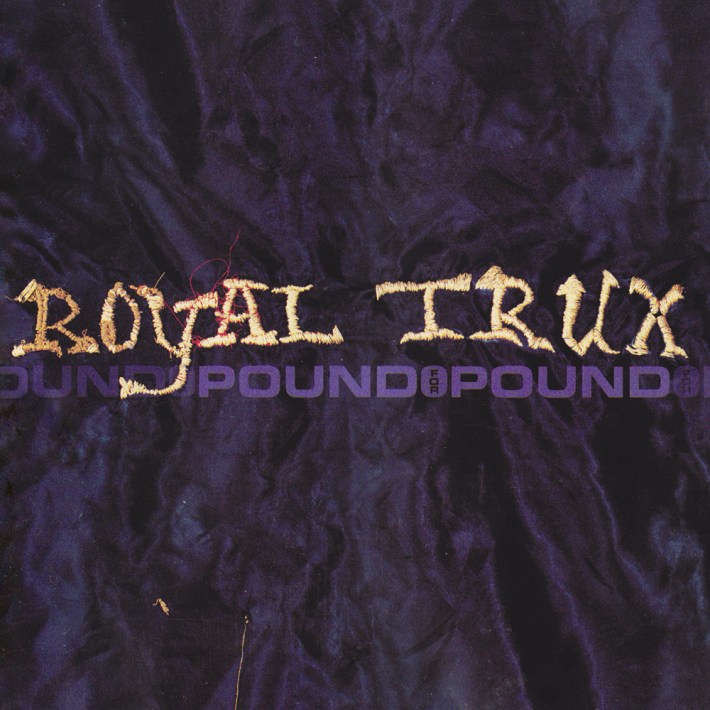
Anyone who caught the Trux live in 1999 saw, essentially, the Thank You lineup reunited, with the addition of Ken Nasta (who drummed on Sweet Sixteen) joining Chris Pyle on percussion, along with bass master Dan Brown. The band wasted no time at the conclusion of the tour to enter the studio to record Pound For Pound. As the band stated at the time of its release, Pound For Pound was essentially an extension of Veterans' closing opus "Blue Is The Frequency." While the lineup was essentially the same as Thank You, Pound avoids the sterile, time-capsule feel and comes off as a much more loose, living, breathing document. In short, it swings. Songs here are allowed to stretch out. There's room again for Hagerty's solos, drum solos, middle breakdown horn solos, etc. This might be the only album in their repertoire that Royal Trux seem comfortable as a band. Unfortunately, Royal Trux playing more or less straight-ahead rock songs isn't as memorable as, say, Cats And Dogs or Accelerator. Still, Royal Trux were a great straight-up rock band when they wanted to be. And if you wanted an album's worth of "Blue Is The Frequency"-sounding jams... well, here it is. There are, however, some elements just under the surface that separate the Trux from, say, the Black Crowes. It was around the late '90s that Hagerty began referencing avant-garde jazz saxophonist Ornette Coleman's theory of Harmolodics in interviews. For the unfamiliar (and non-musicians) Harmolodics is a difficult philosophy/approach to grasp. For our purposes here, let's just say that it seeks to free musicians from traditional expectations and rules of European music. In Royal Trux's later records, one sees this approach more and more, but none more clearly than, say Chris Pyle and Ken Nasta's drum solo section on album-closer "Dr. Gone," which is Royal Trux's version of "Drums In Space."
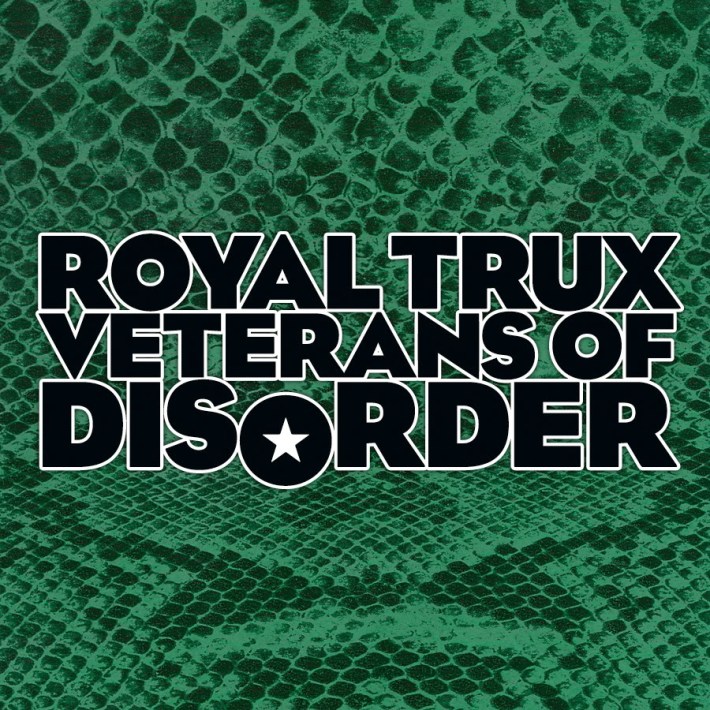
After the otherworldly amazingness of Accelerator, Royal Trux would spend the rest of their career sort of looking back, rather than forward. This isn't to say that they phoned anything in or that Veterans isn't an interesting and fun listen. Quite the contrary! The record is chock full of great songs. This becomes immediately apparent with the opening riff of "Waterpark," which could be mistaken for the work of any number of riff gods from the '70s. The band said at the time of this album's release that it was meant to sound like a series of singles, which sounds about right. But the most interesting thing about this record from a fan or listener's perspective is the fact that each song sounds like it could have been an outtake from each of their previous albums, or at the very least seem inspired by the spirit or approach of a previous album. Thus, it sort of operates like a career overview, but made up of completely new material. And on the Veterans tour, the band played at least one song from every one of their releases up to that point, making the live shows a career retrospective, as well. While the first side nicely captures the types of tunes that made up their Untitled through Accelerator days, the first two songs of the second side are an homage to the Twin Infinitives-era. The big send-off, "Blue Is The Frequency," could have fit seamlessly onto the previous year's 3-Song EP (and was likely recorded around that time, anyway) and shows off Hagerty's effortless and free-form/improv soloing capabilities. This was the first long-form (at 8+ minutes) Trux jam to truly highlight Hagerty's chops, and would set the stage and template for their final album the following year. While certainly not innovative or breaking new ground, Veterans is definitely a fun listen and truly the best way to introduce a new listener to the band.
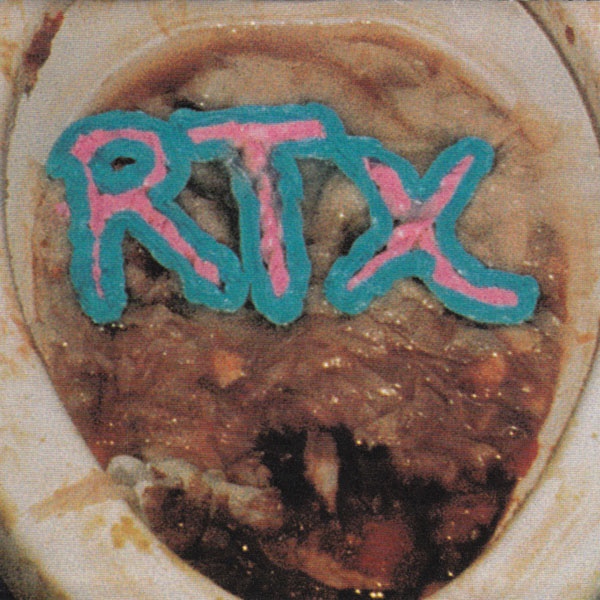
For the second part of their loose "decades" trilogy, Hagerty and Herrema set out to capture a 1970s FM radio feel, with no song to be under four minutes, apparently. The Virgin money was spent wisely on a rural ranch in Virginia and a home studio with tons of gear. The end result was the most criminally overlooked and underrated album of the '90s. Herrema has stated several times since its release that she is continually impressed that she was actually involved in the making of the record, and that's saying something, coming from the person who also had something to do with Trux masterpieces Accelerator and Twin Infinitives. No doubt they had lost plenty of old-school Trux fans with Thank You, and plenty of folks were likely aghast at the sullied toilet bowl that graces Sweet's cover (it wasn't really puke and shit, kids, but still). Regardless, Sweet Sixteen is, quite simply, their Abbey Road or Pet Sounds. It's an amazing achievement and pretty untouchable. With David Briggs in poor health and out of the picture, the group produced the album themselves, but it might as well have been handled by Becker and Fagen, with its Steely Dan-level attention to detail. In short, no stop here goes un-pulled. There are strings, keyboards, saxophones, booming choruses, proggy mid-sections, vocal interplay between Hagerty and Herrema, a busy and spot-on rhythm section in Dan Brown and Ken Nasta, and... guitar solos. Lots of glorious, over-the-top soloing. If it weren't for the reputation(s) that preceded them and the fact that he's a reclusive savant who's already recording his next album, Hagerty would (should) have been on the cover of Guitar Player magazine any number of times in the '90s. What may get lost in the denseness of these tracks is how much FUN the band seemed to be having, something that would be even more apparent on their following release, Accelerator. It's near impossible to avoid singing along with the "Yeah yeah yeah's" of the hooky and cowbell-laden "Can't Have It Both Ways," for example. One can also find little nuggets of nods to the music of the '70s, as well. Herrema's snickering at the end of the title track mimics Marc Bolan's at the end of "Rabbit Fighter" on T. Rex's seminal glam LP The Slider, while Hagerty's riff that precedes verses on "Roswell Seeds And Stems" borrows heavily from X-Ray Spex's "Warrior In Woolworths." All in all, if you're willing to patiently wade through some of the classic rock tropes, Sweet Sixteen does have a sweet payoff in the end. As the refrain in album-closer "Pol Pot Pie" goes, "If it rocks, put it on the table/ If it rolls, put it in the hole." Sweet Sixteen does both, and well. Alas, the major label days were numbered, when Virgin couldn't hang with the infamously gross covert art. Rather than continue to bet on an unpredictable horse, Virgin cut its losses by cutting Hagerty and Herrema a fat severance check (which paid for their next release) and set them free to return to their hometown of Drag City.

Most bands tend to create a double-LP masterpiece well into their career, having established themselves and developed as artists/songwriters. But Royal Trux are not like most bands. In 1990, Hagerty and Herrema found themselves living in San Francisco, having left NYC, and were living in what sounds like a poverty-level existence. Nonetheless, they plugged away with their recording project, booking time when they could. What's striking about this album is not merely the question of who would want to create something like this, but also who really could, and then actually would?! Hagerty and Herrema ticked all of those boxes. It's a testament to their genius, vision, creativity, patience, and simply not caring what anyone thought. It's difficult to explain exactly what Twin sounds like. Sure, Captain Beefheart's Trout Mask Replica, as well as Lou Reed's Metal Machine Music, early Sonic Youth, and maybe even Can come to mind and are legit connective tissues (Herrema has stated Blue Oyster Cult in interviews, which isn't super apparent to the listener, to be honest), but that doesn't really capture the chaos or beauty of the record. One prevailing theory is that band that recorded basic tracks and layered all kinds of effects over them, then began lots of cutting and splicing in the editing process, only to remove the basic tracks from the final mix, leaving all those layers of effects to be prominent in the final product. Twin plays like a fever dream, of sorts, with various fragments coming in and out of consciousness, so to speak. A repetitive guitar riff may come in for a bit and then fade away, to be replaced by various synth phrases, drum machines, and Herrema and Hagerty at times wailing as if in pain, and others calmly singing about ice cream. According to interviews, Hagerty and Herrema recorded the album completely sober, but listened back and reviewed the mixes under various substances (i.e. the marijuana test, LSD test, etc.). The song titles reveal a lot about where their heads were at this time: "Yim Jim Versus The Vomit Creature," "Ratcreeps," "Chances Are The Comet's In Our Future," and the album's centerpiece, the sidelong, nearly 15-minute epic "(Edge Of The) Ape Oven." It's certainly the most challenging of the Trux catalogue to digest, but does reward the listener's investment by slowly revealing more of itself over time. Twin Infinitives stands in a league and category all its own. To most indie bands and fans, it's way too avant-garde, while to avant-garde enthusiasts, a record like this, made by two skuzzed-out noise-sters is probably too left field.

For the last installment in their loosely defined "decades" trilogy, as well as their return to their Drag City home, Hagerty and Herrema took the remaining dough that Virgin owed them, retreated again inside their Virginia compound, and produced an album inspired by the sounds of the '80s. In short, Accelerator sounds like nothing else in their repertoire (or anyone else's, for that matter), with the help of a mixing device called the Spectrum Analyzer, and keyboardist Tim McClain. To non-studio techies it sounds like some sort of steam-punk machine that turns songs into compressed, crunchy pop tunes, yet still far out enough to feel like a Trux album. Whatever it is, it simply transformed their songs to a nearly timeless quality, and is the reason that Accelerator sounds like it actually could have come out in the '80s, or just yesterday. There's a reason why Primal Scream, Sleigh Bells, the Kills, and many more are indebted to this version of Royal Trux, and it's mainly due to Accelerator. Primal Scream's Bobby Gillespie was such a huge Trux fan that he even included a song on Primal Scream's 2000 album XTRMNTR called "Accelerator" that is more than an obvious homage. Where Sweet Sixteen required patience and investment to become acquainted with its long and somewhat drawn-out songs, Accelerator is all about instant gratification. It's an album that either grabs you from the get-go or doesn't at all. This isn't to say that there aren't layers to unpeel and discover like there were on Sweet Sixteen; there are, it's just more fun and there's less labor involved in doing so, yet it's just as rewarding. Musically, rather than show off their chops in the traditional rock 'n' roll song structures, as they had done on their previous two albums, the songs here are repetitive to the point of being hypnotic. As such, it's often impossible to know if you're listing to the beginning, middle, or end of any of its nine tracks. Lyrically, Hagerty and Herrema show a much more fun and goofier side, as well. The two catchiest songs employ Herrema and the band as backup chorus (featuring Rian Murphy) engaging in call-and-response. On "The Banana Question" Herrema basically repeats over and over "Is that a question? Is that a f***in' question," in response to the chorus chanting the song's title. Album highlight, and Side 1, closer "Juicy, Juicy, Juice" sucks the listener into its sweet and sugary vortex. Aside from a few indecipherable bridges spoke/sung by Hagerty, the song is essentially just a loop of the chorus, ad infinitum. It actually sounds like it could be a jingle for an '80s juice-box commercial, albeit a warped Royal Trux-inspired version of it. Only a couple songs seem to be outliers of the grand approach here. The acoustic and harmonica-featuring "Yellow Kid," which was as close as Royal Trux got to Dylan territory, could have easily been right at home on Cats And Dogs. The beautiful, and notably un-compressed-sounding "Stevie (For Steven S.)" (apparently a tribute to Steven Seagal!) wouldn't have been out of place on Sweet Sixteen, and is so Steely Dan-smooth it begs the question why the band never explored a bit more of this avenue. If any reissue in the history of reissues ever deserved to include the original mixes or demos, Accelerator is definitely it. Until then (and that's not likely to happen, frankly), there's more than enough pleasurable returns with the original article -- easily one of the zaniest-sounding records of the last 20 years.

Although recorded slightly less than halfway through their lifespan, Cats And Dogs is the centerpiece of the Trux oeuvre and musical worldview. From this record, one can trace all the avenues the band would explore. In other words, everything the band did, both before and after it, can be linked back to this album in one way or another. It's a pivotal album for them and, really, their most important. Much of this is probably due to the material being well into their drug-free zone, as well as the first Royal Trux album to feature other musicians besides Hagerty and Herrema. While 1992's Untitled set the stage for the indie rock version of the band, and where the Rolling Stones (and to a lesser degree, Velvet Underground) comparisons began rolling in, it was on Cats And Dogs that they perfected it. It's here that the band most adeptly straddled the line between the experimental and sometimes chaotic nature of their early records and the sheen of their major label ones. While not officially their first "clean" record (that would be 1992's Untitled), it was the first to feel and breathe like the new and improved Royal Trux. The haziness that crept into earlier records was still there, but lifting just enough to reveal a great batch of songs and a vision for presenting them. The band has said in multiple interviews that the record was loosely based on the "grunge" bands that they often shared bills with in the early '90s. As with their "decades" trilogy, this should be taken with a grain of salt, as it likely served as more of a structure of elements to include and eliminate in the writing and recording process than an actual homage to a sound or style. Regardless, it's not a stretch to imagine Nirvana (Kurt Cobain was apparently a big fan of Cats And Dogs) covering "The Flag" or "Hot And Cold Skulls" and doing them justice. While the lyrics on 1992's Untitled were primarily self-referential, inward looking, and still anchored with one foot in their past, it's on Cats And Dogs that Hagerty and Herrema begin to exit their previously insular world and take a look around at their surroundings, their place in it, and people that inhabit it, which occasionally borders on social commentary. And while it's not usually a pretty picture, there's a rather melancholy sense of struggle and hope underlying all of these songs, even with the often cryptic and mysterious lyrics. The album's centerpiece "Turn Of The Century" is a perfect example of this. Toward the end, Hagerty and Herrema overlap the following verse, which sounds about as close to autobiographical as the band would ever offer up: "So bring me my coat and we'll go down/ Go sit in the square/ Where the prisons used to be/ Just sit around/ Get our balance in this new gravity/ Won't have to be some useless kick/ Don't enjoy choices so bleak/ Twist it all upside down." Sound like a re-birth to you, too? Further on, the guitar and bongos minimalism of "The Spectre" retains some of the hippy-dippy (astrological, perhaps) elements of some of their earlier songs ("Chances Are The Comet's In Our Future," "Air," etc.), but there's enough real poetry in the lyrics here to give the songs real depth and believability, even if you don't really know what they're talking about (and most of the time, you don't). Album closer "Driving In That Car (With The Eagle On The Hood)" harkens back to Twin Infinitives territory to deliver a rather spooky and lyrically mysterious exit. Over its spacy ominous synth, minimal guitar, and drum machine, Hagerty and Herrema each handle verse and chorus, but at different times, often overlapping (as in "Turn Of The Century"). The effect is to give the song a much more off-kilter, disjointed, and spooky feel, and in the process giving the song a wider breadth than if they'd simply harmonized together. As an aside, it's worth considering the relationship to fellow indie rockers and friends (and former Drag City label-mates) Pavement. Stephen Malkmus, a noted Trux fan, stated in the liner notes to the deluxe reissue of Crooked Rain, Crooked Rain (which came out a year after Cats And Dogs) that "Heaven Is A Truck" was about Royal Trux. Of course, the lyrics are in the classically obtuse Malkmusian style, which, along with its hazy, lazy, mid-tempo breeze is a nod to Cats And Dogs, really. It's also fun to think of the Pavement album title as a response to Cats And Dogs (as in, raining cats and dogs), but that's probably a bit of a stretch. In a weird way, Cats And Dogs could be viewed as a sort of companion to Crooked Rain. After all, both bands were coming into their own in the mid-'90s, after having previously created a seminal and much more experimental album, to try to figure out their place and future in indie rock. Royal Trux would go on to much bigger things (studios, budgets, bands, sounds, etc.), but Cats And Dogs is their best, especially given that it was "arranged and conducted" (as the liner notes state) by two people with little money, only a small following, and a massive reputation that preceded them, which usually had little to do with the music.
